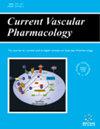Association between Dietary Vitamin E Intake and the Risk of Hypertension in US Adults
IF 2.8
3区 医学
Q2 PERIPHERAL VASCULAR DISEASE
引用次数: 0
Abstract
Background:: Many studies have shown that Vitamin E (VitE) intake has beneficial effects on human health, but the relationship between VitE intake and Blood Pressure (BP) is not well understood. Thus, our present study aimed to assess the relationship between VitE intake and hypertension, systolic and diastolic BP in US (United States) adults. Method:: We used data from the 2003-2018 National Health and Nutrition Examination Survey (NHANES). Weighted multivariate regression analysis, subgroup analysis, and Restricted Cubic Splines (RCS) were used to explore the independent associations between VitE intake and hypertension, systolic and diastolic BP. A total of 32,371 participants were included in this study. The mean VitE intake of participants was 8.50 ± 0.08 mg/d. The prevalence of hypertension in subjects was 37.76% and it decreased with increasing VitE intake quartiles (quartile 1: 40.97%, quartile 2: 37.60%, quartile 3: 37.47%, quartile 4: 35.66%). A significant negative correlation was found between VitE intake and hypertension. Result:: We also observed a significant negative association between VitE intake and systolic BP (model 1: β = -0.11, 95% CI: -0.15 ~ -0.07; model 2: β = -0.09, 95% CI: -0.12 ~ -0.05; and model 3: β = -0.05, 95% CI: -0.10 ~ -0.01). Quartile 2 of dietary VitE intake significantly correlated to a lower diastolic BP compared to the lowest quartile of VitE intake (model 3: β = -0.72, 95%CI: -1.26~-0.18). Conclusion:: In US adults, VitE intake has not been significantly found to be associated with hypertension, but it has been found to exhibit a negative association with both systolic and diastolic BP in US adults.美国成年人膳食维生素 E 摄入量与高血压风险之间的关系
背景::许多研究表明,维生素 E(VitE)的摄入量对人体健康有益,但 VitE 摄入量与血压(BP)之间的关系尚不十分清楚。因此,本研究旨在评估美国成年人维生素 E 摄入量与高血压、收缩压和舒张压之间的关系。方法:我们使用了 2003-2018 年美国国家健康与营养调查(NHANES)的数据。采用加权多变量回归分析、亚组分析和受限立方样条(RCS)来探讨VitE摄入量与高血压、收缩压和舒张压之间的独立关联。本研究共纳入 32 371 名参与者。参与者的平均维生素E摄入量为8.50±0.08毫克/天。受试者的高血压患病率为 37.76%,随着维生素 E 摄入量四分位数的增加而降低(四分位数 1:40.97%;四分位数 2:37.60%;四分位数 3:37.47%;四分位数 4:35.66%)。发现维生素 E 摄入量与高血压之间存在明显的负相关。结果::我们还观察到维生素 E 摄入量与收缩压之间存在明显的负相关(模型 1:β = -0.11,95% CI:-0.15 ~ -0.07;模型 2:β = -0.09,95% CI:-0.12 ~ -0.05;模型 3:β = -0.05,95% CI:-0.10 ~ -0.01)。与维生素E摄入量最低的四分位数相比,膳食中维生素E摄入量的第二分位数与舒张压的降低有显著相关性(模型3:β = -0.72,95%CI:-1.26~-0.18)。结论在美国成年人中,没有发现维生素E摄入量与高血压有明显关系,但发现维生素E摄入量与收缩压和舒张压均呈负相关。
本文章由计算机程序翻译,如有差异,请以英文原文为准。
求助全文
约1分钟内获得全文
求助全文
来源期刊

Current vascular pharmacology
医学-外周血管病
CiteScore
9.20
自引率
4.40%
发文量
54
审稿时长
6-12 weeks
期刊介绍:
Current Vascular Pharmacology publishes clinical and research-based reviews/mini-reviews, original research articles, letters, debates, drug clinical trial studies and guest edited issues to update all those concerned with the treatment of vascular disease, bridging the gap between clinical practice and ongoing research.
Vascular disease is the commonest cause of death in Westernized countries and its incidence is on the increase in developing countries. It follows that considerable research is directed at establishing effective treatment for acute vascular events. Long-term treatment has also received considerable attention (e.g. for symptomatic relief). Furthermore, effective prevention, whether primary or secondary, is backed by the findings of several landmark trials. Vascular disease is a complex field with primary care physicians and nurse practitioners as well as several specialties involved. The latter include cardiology, vascular and cardio thoracic surgery, general medicine, radiology, clinical pharmacology and neurology (stroke units).
 求助内容:
求助内容: 应助结果提醒方式:
应助结果提醒方式:


